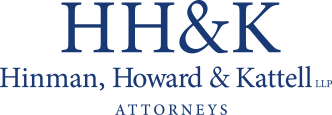
UPDATED: Friday, 1/15/2021 @ 4:30 pm
As an update to the Client Alert we sent out earlier this week, the SBA has announced that it is currently accepting Paycheck Protection Program (“PPP”) loan applications from participating community financial institutions and lenders with under $1 billion in assets, which includes approximately 5,000 institutions, including community banks, credit unions, and farm credit institutions. The PPP will open to all lenders on January 19, 2021.
—– ORIGINAL CLIENT ALERT ——
Dear Clients and Friends:
Following passage of the Economic Aid to Hard-Hit Small Businesses, Nonprofits, and Venues Act (the “Act”) (which was signed by the President on December 27, 2020), the U.S. Small Business Administration (“SBA”) released new Interim Final Rules (“IFR(s)”) on January 6, 2021 to (1) implement the provisions of the Act and consolidate guidance regarding the Paycheck Protection Program (“PPP”); and (2) provide further information regarding the second draw PPP loans (“Second Draw PPP Loan(s)”) authorized in Section 311 of the Act. In addition, the SBA issued new PPP loan applications for both first time PPP loans (“First Draw PPP Loan(s)”) and Second Draw PPP Loans on January 8, 2021.
This Client Alert provides a summary of the guidance released to date on the PPP since passage of the Act, including the timeline for applying for First Draw PPP Loans and Second Draw PPP Loans, and the new IFR regarding Second Draw PPP Loans. This information is not legal advice and may not be suitable for all client situations. As always, if you would like specific legal assistance with respect to the PPP or any other matters, please do not hesitate to contact your HH&K attorney.
How and When to Apply for PPP Loans
The SBA’s PPP loan portal reopened for First Draw PPP Loan applications on January 11, 2021. The SBA announced that it will initially only accept First Draw PPP Loan applications from participating community financial institutions and that the PPP will open to all participating lenders shortly thereafter. The SBA has not yet stated what “shortly thereafter” means.
Guidance published by the SBA indicates that it will start accepting Second Draw PPP Loans on January 13, 2021 but that, as with First Draw PPP Loans, it will initially only accept Second Draw PPP Loan applications from participating community financial institutions. Similarly, the SBA has indicated that the PPP will open to all participating lenders for Second Draw PPP Loans shortly thereafter, but has not yet stated what “shortly thereafter” means.
Under the Act, the SBA will be guaranteeing First Draw PPP Loans and Second Draw PPP Loans that are both applied for and received through March 31, 2021. As always, this is subject to availability of funds and any future changes to the PPP.
The new application for First Draw PPP Loans is available here.
The application for Second Draw PPP Loans is available here.
PLEASE NOTE that, as with prior PPP loans, most lenders will likely have online portals for borrowers to use in applying for both First Draw PPP Loans and Second Draw PPP Loans, rather than using the paper forms published by the SBA. Contact your lender to confirm the application process you should follow, but the SBA paper form will be a good guide for you to use in assembling the information needed for your application.
SBA Guidance Regarding Second Draw PPP Loans
The new IFR on Second Draw PPP Loans provides certain clarifications, details and guidance for those borrowers looking to obtain a Second Draw PPP Loan.
Eligible Borrowers
The new IFR provides some additional guidance regarding borrowers eligible to receive a Second Draw PPP Loan. The following parties are not eligible to receive a Second Draw PPP Loan:
- Any borrower that used the proceeds of the First Draw PPP Loan on ineligible expenses;
- Any borrower that was determined to be ineligible to receive a First Draw PPP Loan (even after receiving a First Draw PPP Loan).
- Any borrower that received a First Draw PPP Loan, but whose business is now permanently closed.
Businesses That Are Part of a Single Corporate Group
The aggregate amount that a single corporate group may receive in Second Draw PPP Loans is $4 million (vs. $20 million for First Draw PPP Loans). For purposes of this limit, businesses are part of a single corporate group if they are majority owned, directly or indirectly, by a common parent.
Affiliation Rules
Second Draw PPP Loans generally have the same affiliation rules as First Draw PPP Loans. Most borrowers are considered along with affiliates to determine eligibility for a loan. There is also a similar exception for Second Draw PPP Loans for business entities with a NAICS code beginning with 72 (e.g. restaurants and hotels) and news organizations with a NAICS code beginning with 511110 or 5151, which can qualify for Second Draw PPP Loans if the business employs no more than 300 employees per physical location and meets the revenue reduction requirements and other eligibility criteria.
Unresolved First Draw PPP Loans
The SBA will notify the lender if it submits an application for guaranty of a Second Draw PPP Loan in connection with a borrower (i) that is under review by the SBA and/or (ii) where the SBA has information indicating that the borrower may have been ineligible for the First Draw PPP Loan it received (or the amount that it received). Under such circumstances, the lender will not receive an SBA loan number until the issue related to the First Draw PPP Loan has been resolved (and the SBA has committed to resolve outstanding issues expeditiously). The SBA will, however, set aside available appropriations to fund the borrower’s Second Draw PPP Loan in the event that the First Draw PPP Loan is resolved and the Second Draw PPP loan is approved.
Calculating Maximum Loan Amount
Except for seasonal businesses (for which special rules apply), the SBA guidance provides that borrowers may use payroll costs during any of the following periods to calculate the maximum loan amount: (1) 2019; (2) 2020; or (3) the precise 1-year period before the date on which the loan is made. The Act stated that borrowers could use payroll costs during 2019 or during the past 12 months to calculate the maximum loan amount. The SBA recognizes that, for most borrowers, it will be simpler to use a full calendar year and, in that regard, the new IFR expressly permits borrowers to use payroll costs during 2020 (rather than the precise past 12 months) to calculate the maximum loan amount.
Calculating Gross Receipts and Revenue Reduction
As an alternative to the 2019/2020 quarter-to-quarter comparison method for establishing the required 25% revenue reduction, a business can meet the revenue reduction requirement if it experienced at least a 25% reduction in annual gross receipts during 2020 relative to 2019. The borrower must submit copies of its annual tax return or report substantiating the revenue decline or, if tax forms are not available, the borrower can submit financial statements. Further, the amount of any forgiven First Draw PPP Loan is not included in gross receipts for purposes of calculating revenue reduction.
Supporting Documentation
The documentation that is required to substantiate a borrower’s payroll cost calculations for Second Draw PPP Loans is generally the same as the documentation that was required for First Draw PPP Loans. Accordingly, the borrower does not need to submit supporting documentation for its loan amount if the applicant: (1) used calendar year 2019 figures to determine its First Draw PPP Loan amount; (2) uses calendar year 2019 figures to determine its Second Draw PPP Loan amount (instead of 2020 or the past 12 months); and (3) is applying for the Second Draw PPP Loan through the same lender that made the applicant’s First Draw PPP Loan. A lender is, however, permitted to request additional documentation if it determines in its own discretion that such information would be useful in conducting the lender’s good-faith review of the borrower’s calculation.
Borrowers also need to submit documentation adequate to establish that the business meets the revenue reduction requirements. This documentation may include relevant tax forms (including annual tax returns or reports, if applicable) or, if such tax forms are not available, financial statements or bank statements may be sufficient. Any borrower that is borrowing more than $150,000 must submit this supporting documentation at the time of the loan application. Borrowers of $150,000 or less, however, can defer the submission of this documentation until the time the borrowers seek loan forgiveness.
Contact Your HH&K Attorney for Legal Guidance
This information is not legal advice and may not be suitable for all client situations. This Client Alert provides general information regarding the Paycheck Protection Program and does not outline all of the important considerations related thereto. We anticipate that the terms of the PPP may continue to evolve as the SBA releases guidance.
This Client Alert is not a substitute for legal guidance regarding program details and how those may be applicable to your business. As always, if we can be of assistance during this difficult time, please do not hesitate to contact your HH&K attorney.

| Erica L. Lawson Partner 80 Exchange Street Binghamton, NY 13901 Phone: (607) 231-6907 Email: elawson@hhk.com |
Copyright © 2021 by Hinman, Howard & Kattell LLP. This Client Alert is provided as a general information service to clients and friends of Hinman, Howard & Kattell, LLP. It should not be construed as, and does not constitute legal advice on any specific matter, nor does this message create an attorney-client relationship. These materials may be considered Attorney Advertising in some states.
